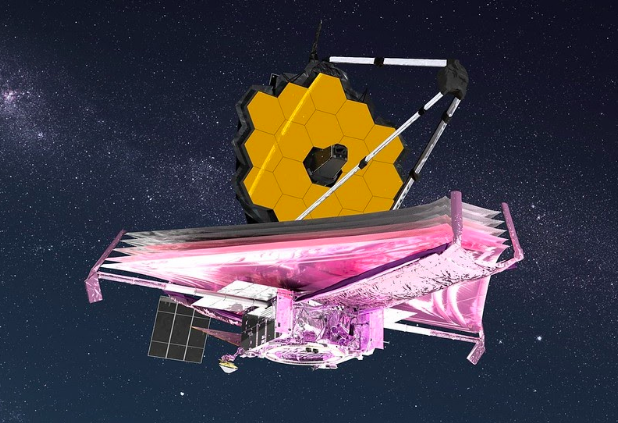By Nikolai Perebeinos
On January 8th NASA’s James Webb Space Telescope successfully completed the unfolding of its mirror, taking its final shape. The unfolding is the last major step in the deployment of this telescope, which took place 18 days after the launch. The 18 hexagonal mirrors took their positions, assembling the 21.3 ft mirror. Now it needs to undergo a long process of focusing and calibration before starting to work.
A joint project of NASA and the European Space Agency, the $10 billion James Webb Space Telescope is considered to be the most powerful space telescope ever. Its mirror’s diameter is twice as big as Hubble Space Telescope’s one. The James Webb Space Telescope is equipped with an infrared camera, which allows it to see through the clouds of dust. Its sunshield protects it from the heat of sunlight and earthlight, allowing it to cool to minus 370 Fahrenheit. Because of the extremely cold temperatures of the telescope’s operational side, it can receive weak signals from the depth of time and space of our universe. “The James Webb Space Telescope Sunshield is completely unique,” says James Cooper, NASA James Webb Space Telescope Sunshield manager. “There are no other telescopes that use this type of shield for cooling of their optics.”
This telescope will look into the past of our universe. As the universe expands the length of the lightwaves increases, causing the visible and ultraviolet light to become infrared. Because of this infrared camera and extremely cold temperatures, James Webb Space Telescope will be able to receive light emitted by the first galaxies after it traveled for billions of years. It will look for light from the first galaxies formed after the Big Bang and observe how galaxies have evolved from formation until now. It will observe the formation of stars from the beginning to the formation of planetary systems. It will also investigate the chemical and physical properties of planetary systems, including our own Solar system, and look for potential for life.
James Webb Space Telescope’s launch happened to be on Christmas day. An incident during attaching the telescope to the launch vehicle adapter, and following additional testing delayed the launch until December 22nd, and then weather conditions shifted the launch date to December 25.
Source: NASA
On December 25, 2021, 07:20 EST Arian 5 rocket lifted off the launch pad, successfully launching the James Webb Space telescope into its long journey to Lagrange point 2, which lies 930,000 miles away from earth. It is almost 4 times farther from Earth than the Moon. Lagrange points are places in space where the gravitational forces are equal to the centripetal force required to maintain in place, decreasing the amount of fuel that needs to be spent to stay in orbit. In simpler words, the James Webb Space Telescope is going to be put in place without moving relative to earth.

